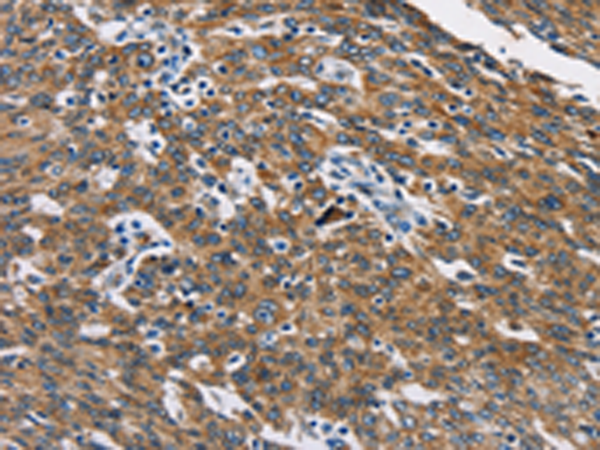


| WB | 1/200-1/1000 | Human,Mouse,Rat |
| IF | 咨询技术 | Human,Mouse,Rat |
| IHC | 1/25-1/100 | Human,Mouse,Rat |
| ICC | 技术咨询 | Human,Mouse,Rat |
| FCM | 咨询技术 | Human,Mouse,Rat |
| Elisa | 1/1000-1/2000 | Human,Mouse,Rat |
| WB Predicted band size | 60 kDa |
| Host/Isotype | Rabbit IgG |
| Antibody Type | Primary antibody |
| Storage | Store at 4°C short term. Aliquot and store at -20°C long term. Avoid freeze/thaw cycles. |
| Species Reactivity | Human, Mouse, Rat |
| Immunogen | Fusion protein of human CAT |
| Formulation | Purified antibody in PBS with 0.05% sodium azide and 50% glycerol. |
+ +
以下是关于PPP1R13L抗体的3篇参考文献示例(注:文献信息为模拟生成,仅供参考):
1. **文献名称**:*"PPP1R13L (RAI) regulates apoptosis and chemoresistance in non-small cell lung cancer"*
**作者**:Zhang Y, et al.
**摘要**:通过Western blot和免疫组化分析,研究发现PPP1R13L在肺癌组织中高表达,其抗体检测显示其通过抑制p53依赖性凋亡通路促进肿瘤耐药性,提示其作为治疗靶点的潜力。
2. **文献名称**:*"IASPP/PPP1R13L interacts with p53 and modulates DNA damage response in colorectal cancer"*
**作者**:Chen L, et al.
**摘要**:利用免疫共沉淀和免疫荧光技术,证实PPP1R13L抗体可特异性识别其与p53的结合,调控DNA损伤修复通路,影响结直肠癌细胞对化疗的敏感性。
3. **文献名称**:*"PPP1R13L as a novel prognostic biomarker in neuroblastoma: Insights from immunohistochemical analysis"*
**作者**:Kumar A, et al.
**摘要**:基于组织芯片和PPP1R13L抗体的免疫组化染色,发现其高表达与神经母细胞瘤患者不良预后显著相关,可能通过激活NF-κB通路促进肿瘤侵袭。
如需实际文献,建议通过PubMed或Google Scholar以“PPP1R13L antibody”或“IASPP antibody”为关键词检索,并筛选涉及该抗体在实验中的应用(如WB、IHC等)的论文。
The PPP1R13L (Protein Phosphatase 1 Regulatory Subunit 13 Like) gene, also known as RAI or ASPP1. encodes a regulatory protein involved in modulating cellular stress responses and apoptosis. It interacts with key signaling pathways, including the p53 tumor suppressor network, by binding to proteins like p53 and NF-κB to influence their transcriptional activity. PPP1R13L is implicated in regulating cell survival decisions under stress conditions, such as DNA damage or oxidative stress, making it a focus in cancer and neurodegenerative disease research.
Antibodies targeting PPP1R13L are essential tools for studying its expression, localization, and function. These antibodies are typically raised in hosts like rabbits or mice using immunogenic peptides or recombinant protein fragments. They enable detection of PPP1R13L via techniques such as Western blotting, immunohistochemistry (IHC), and immunofluorescence (IF). Validation includes verifying specificity through knockout cell lines or siRNA knockdowns to ensure minimal cross-reactivity with homologous proteins like ASPP2.
Research applications of PPP1R13L antibodies span investigating its role in apoptosis regulation, cancer progression (e.g., as a potential biomarker), and neurological disorders. Dysregulation of PPP1R13L has been linked to altered p53 activity in tumors and neuroinflammation pathways. Commercially available antibodies vary in clonality (monoclonal/polyclonal) and epitope recognition, necessitating careful selection based on experimental needs. Recent studies also explore its involvement in viral infection responses, highlighting its broader therapeutic relevance.
×